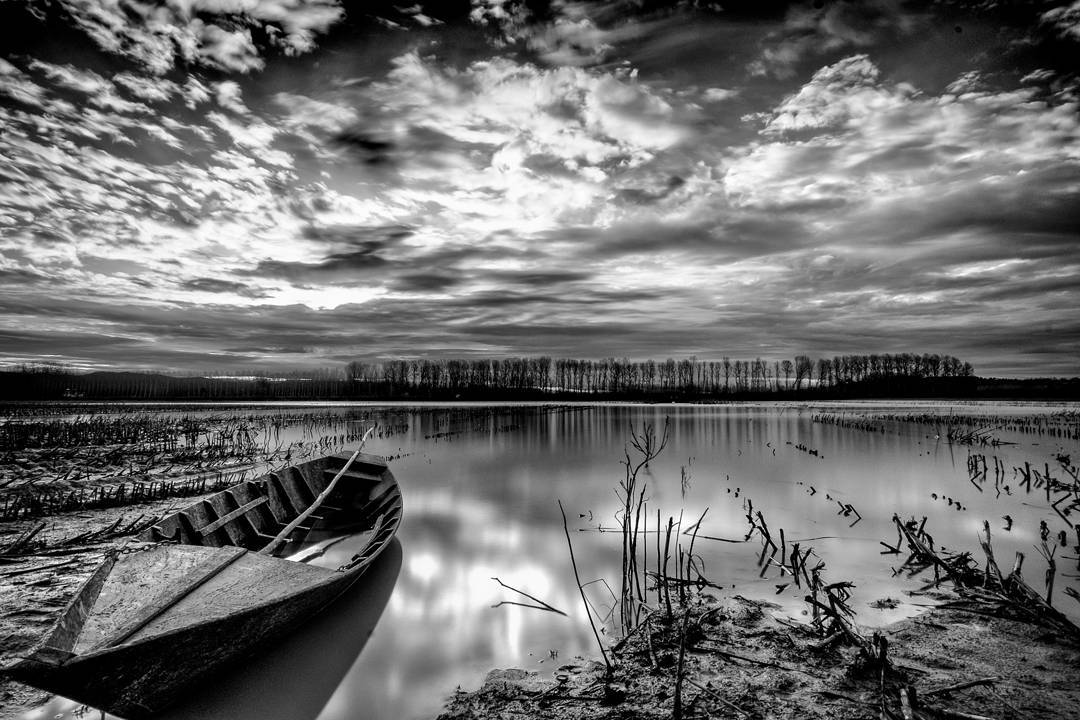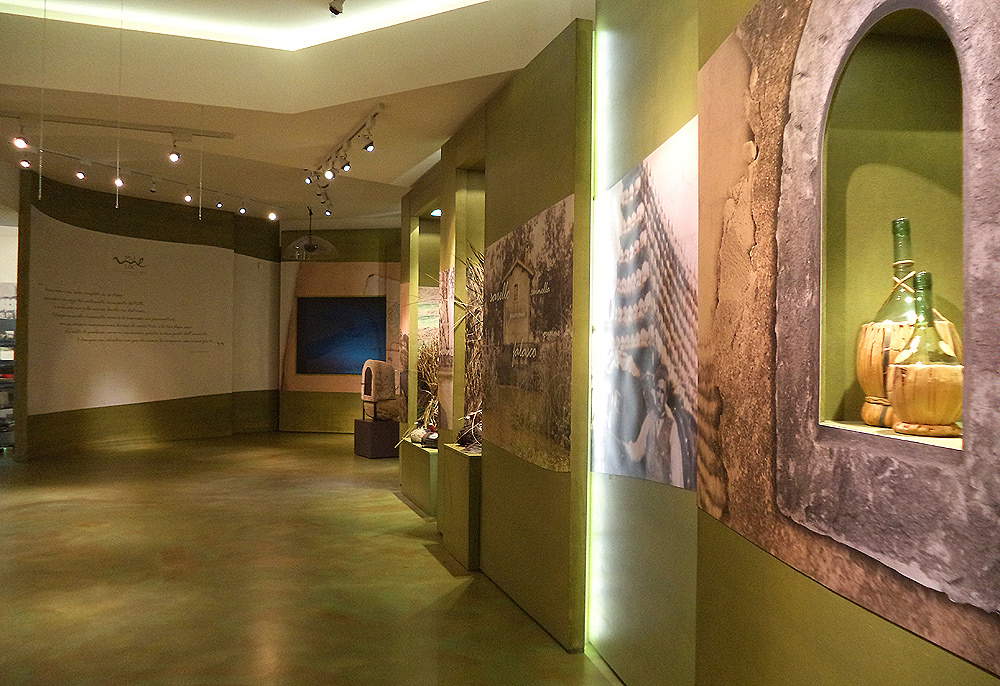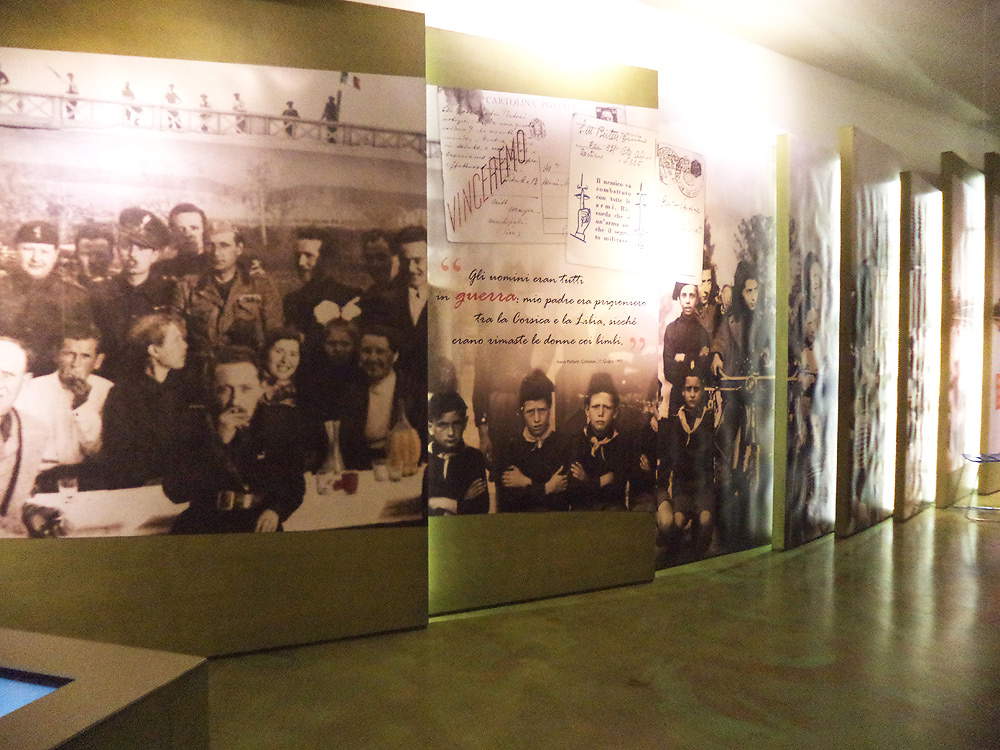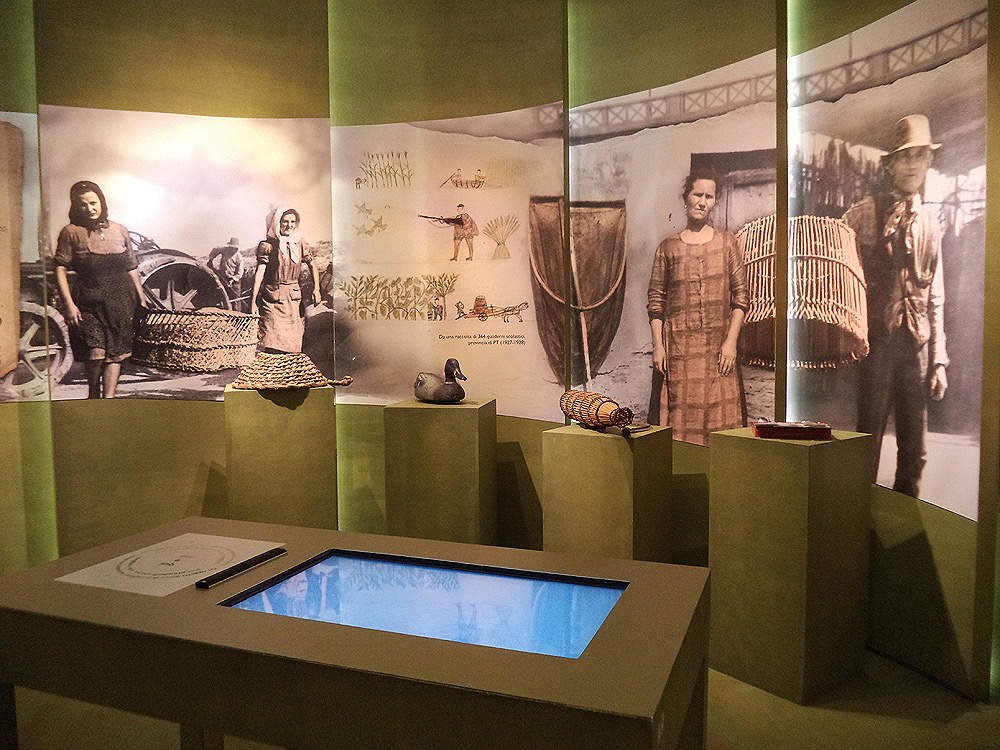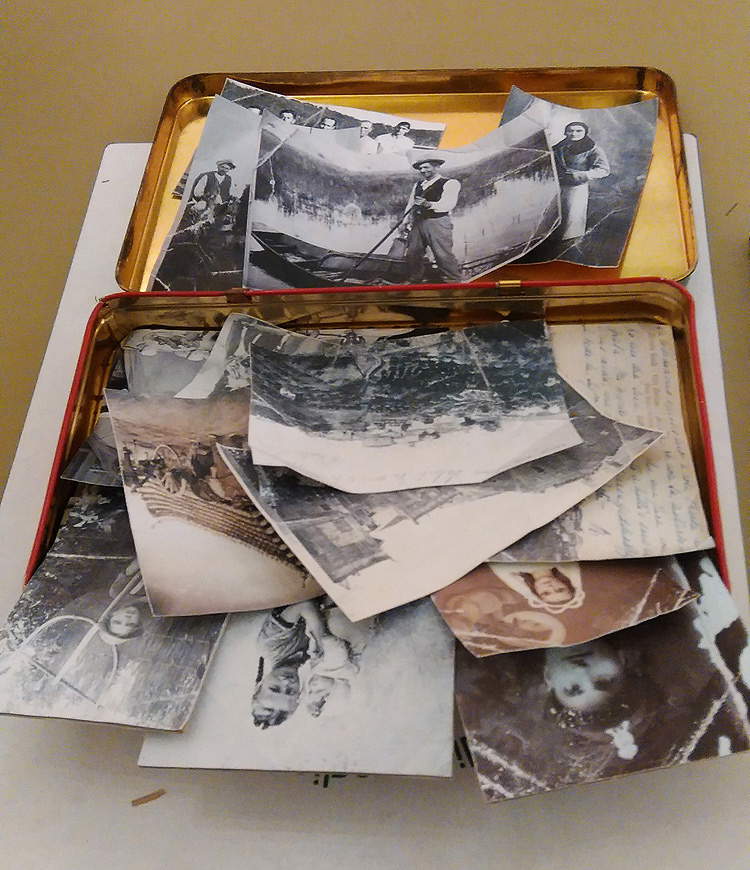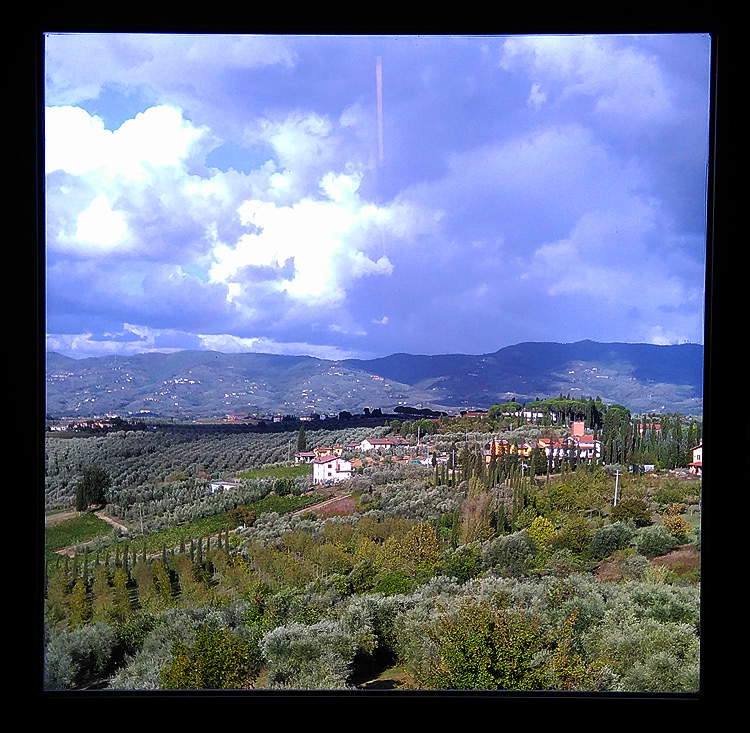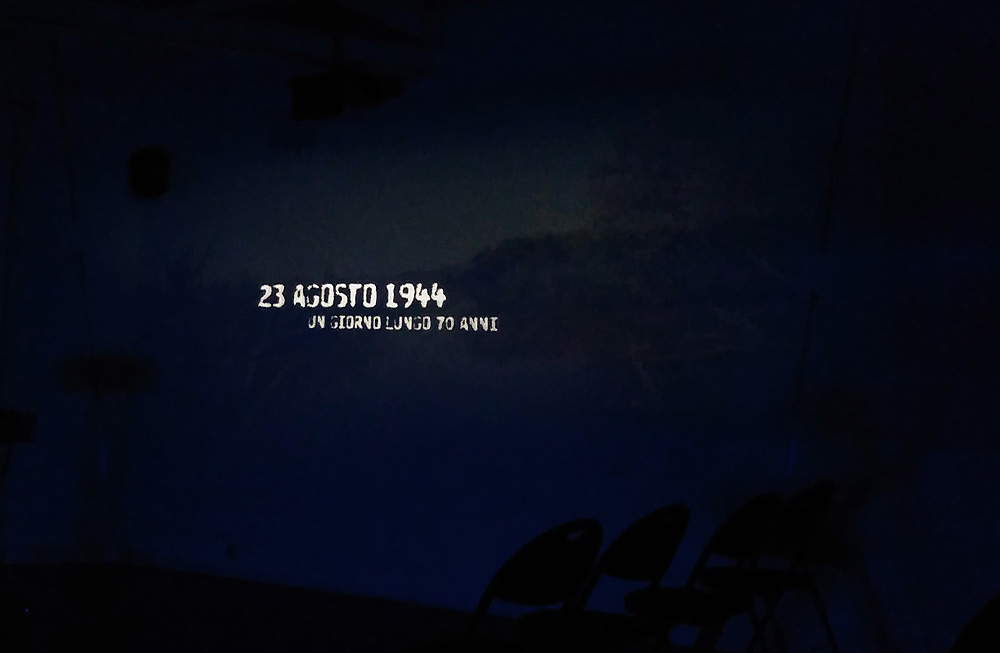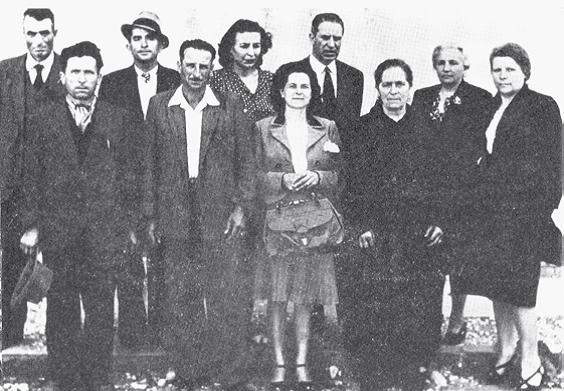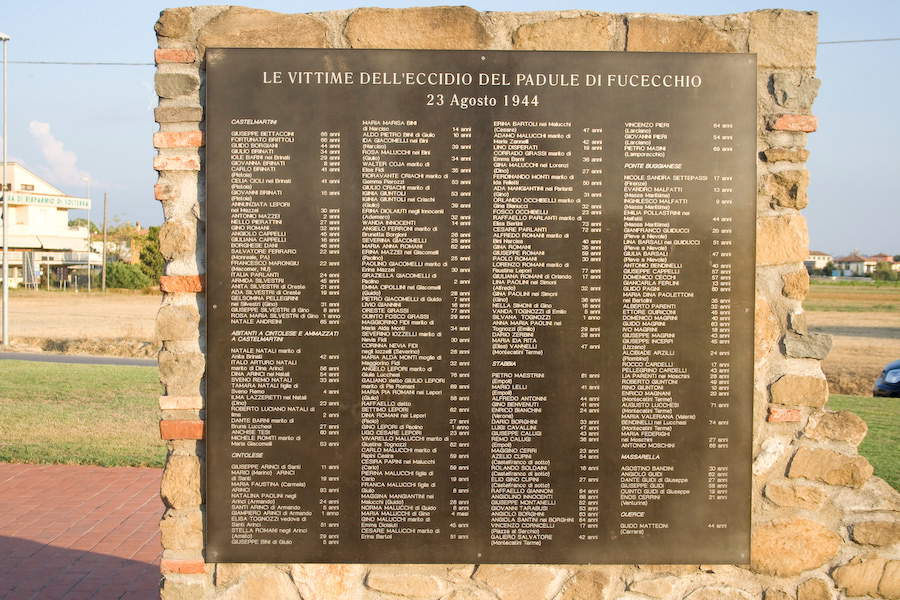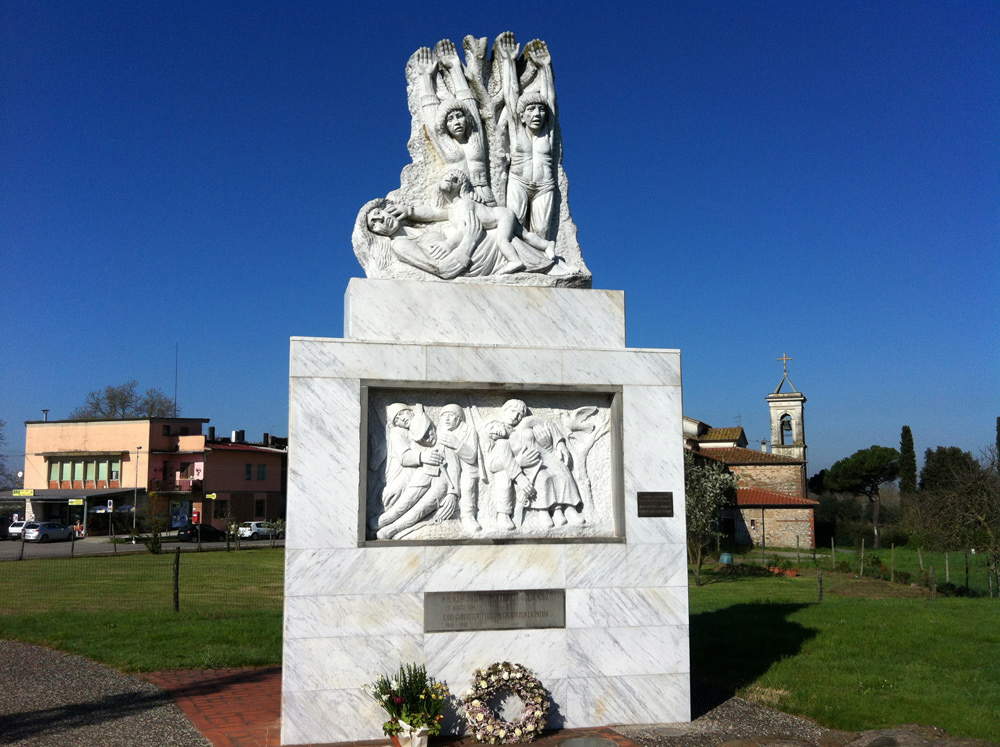by Federico Giannini, Ilaria Baratta , published on 23/08/2018
Categories: Works and artists
/ Disclaimer
On August 23, 1944, one of the most horrific massacres in the history of Italy, the massacre of the Padule di Fucecchio, took place. To preserve its memory, MuMeLoc, the Local Memory Museum of Cerreto Guidi, was born.
It was six o’clock in the morning. The area of the Padule di Fucecchio, the vast marshland that occupies the heart of Tuscany between Empoli and Pontedera and laps the town of Fucecchio, was slowly waking up. Its inhabitants were beginning to prepare to face another hard day like so many, or rather too many, during that sad and tragic period of World War II. Those who had been displaced from their homes because their homes were near areas that had been shelled by the Americans; those who went to gather sarello, a marsh grass that was woven into woven items for domestic use (such as baskets, mats, carboys, chairs); those who went to work in the fields; and those who had stopped in this area, the largest inland marsh in the entire Italian territory, because they could not cross the front and had enough fruit here thanks to the farmers who brought nothing to market. Those who went to feed their livestock or those who took refuge in the Marsh because it was believed to be a safe area, an impassable area that, according to the Padulans, the Nazis, hampered by the swamps, could never reach and strike.
That morning of August 23, 1944, one of the most terrible massacres was perpetrated not only in the territory of Empolese Valdelsa, but in all of Italy: the Nazis, thanks to some spies, learned that many of the inhabitants of that area had hidden themselves right among the reeds of the Padule and, certain that they were going to go for a sure shot, they carried out a tremendous massacre. It was a bloody and tragic roundup that broke the lives of numerous innocent civilians. One hundred and seventy-four were the victims of that premeditated massacre: among them, sixty-two women, twenty-five people over the age of sixty, sixteen teenagers under the age of eighteen, ten children under the age of ten, and eight children under the age of two. A massacre carried out against men, women and even children for the main purpose of striking a hard blow in the anti-partisan war, a reaction against those who were on the side opposed to Nazi-fascist ideology. In addition to the bloody acts, the practice of terror had been deployed: in other words, the Nazi-fascists wanted to make it clear to the population that anyone could be shot. And this was done in order to block any rebellious anti-fascist thought and also to facilitate deportations of thousands of people who would later be employed in the construction of the Gothic Line, a necessary defensive line made by building fortifications on the ridges of the Tuscan-Emilian Apennines in order to prevent the Anglo-American allies from reaching the Po Valley.
The massacre was therefore carried out against the civilian population, and not against partisan formations, since the former were considered defenseless, unable to defend themselves and therefore easier to eliminate. All this was done through a plan well premeditated by the high commands and ruthlessly implemented by the appropriate war units. Definitely false was the justification, given in the trials, to justify the killing of so many children: the latter would be guilty of helping the partisans, bringing them supplies--impossible when one considers that many of the victims did not reach two or four years of age, or even five or seventeen months. An unparalleled ferocity, a frightening brutality that spared no one. In Castelmartini, the village, a hamlet of Larciano, which was one of the main theaters of the horrendous slaughter, there were those who mourned their wives, those who mourned their children, those who mourned their fathers or mothers, those who mourned their grandfathers or grandchildren, but the whole community was involved and deeply scarred, not least because the victims came from different villages in the swamp and its immediate surroundings: from Cintolese, Stabbia, Massarella, Querce, and Ponte Buggianese. There were five in all, the municipalities affected, which counted victims. Many of those responsible for the massacre went unpunished, because they could not be traced; still others received light sentences, as in the case of the general of the Twenty-sixth Armored Division that operated in the Padule, Eduard Crasemann, who got off with ten years’ imprisonment (but died in prison in Germany in 1950), or as was the case with Captain Joseph Strauch, who was given a six-year sentence. Four other perpetrators, Captain Ernst Pistor, Marshal Fritz Jauss (identified as the commander of the squad that carried out the massacre), Sergeant Johann Robert Riss, and Lieutenant Gerhard Deissmann, did not go to trial until the 2000s in Rome, and in 2011 all but Deissmann, who had died in the meantime, were sentenced to life in prison.
To keep the memory of this terrible episode in Italian history alive, the Museum of Local Memory(MuMeLoc), at once an ethnographic and historical museum, was opened in Cerreto Guidi in 2011. The stories of the peasants of the plain of Fucecchio and its surroundings are intertwined with those of the massacre, in a path where walls, ceilings and floors take visitors to the middle of the swamps, among the reeds, at the edges of the expanses of water, in the middle of the glades, among the rustle of the wind that stirs the foliage and the croaking of the frogs. A quotidianity made up of days in the middle of the marsh to fish for tench and eels, of women who sit at the edges of farmhouses weaving wicker to produce flasks and baskets, of farmers who go out to work the land returning only in the evening to write or recite, in front of friends, poems and rhymes in endecasyllables, according to a tradition typical of these areas. A daily routine brutally interrupted on the morning of that August 23.
 |
| The Fucecchio marsh. Ph. Credit Alberto Rescigno |
 |
| The Fucecchio Marshes. Ph. Credit Gabriele Tartoni |
 |
| The Fucecchio marsh. Ph. Credit Iuri Lotti |
 |
| The Fucecchio marsh. Ph. Credit Cristina Monticelli |
 |
| Frame of the film Padule, ricordo di una strage (Italy, 1986, B&W, 60’), entirely dedicated to the massacre at the Padule di Fucecchio |
 |
| Casa Simoni, one of the sites of the massacre: twenty-three people were killed there. Ph. Credit Matteo Grasso - Historical Institute of the Resistance of Pistoia |
The MuMeLoc has dedicated a long section of its exhibition itinerary to the massacre of the Marsh, which in part also affected Cerreto Guidi (thirteen victims were counted there). Visitors can linger in front of videos of witnesses to the incident, they can look at photographs of the time, and they can read documents. The museum tour has the flavor of a journey: one of those journeys of short duration, but extremely meaningful. The public is therefore accompanied inside the Fucecchio Marshes: the aim is to familiarize them with the history of the place (with particular attention to the history of the twentieth century: they become familiar with the economic context, the social context, the political events, from the First to the Second World War, with the rise and fall of Fascism in between), as well as with local traditions, the activities of the area, and the nature that the marshland environment hosts. Part of the narrative is entrusted to talking objects: real objects, which placed on a special table set off dedicated videos, thanks to special sensors. Thus one discovers the origins of creels, the funnel-shaped baskets that were lowered into the water of the marsh for fishing (at the time they were made of wicker), the functions of the hat, the lining of the demijohn, and again a sickle starts the tale of a peasant woman who explains how the land was worked and the harvest was made in the early twentieth century, or a box of old photographs and postcards evokes the memories of the local elders.
Continuing on, we come to the section dedicated to the massacre of the Fucecchio Marshes, which occupies the central area of the museum, and is developed, by means of movable panels and video projections, over two cores: the emotional core and the reflective core. The emotional core takes us back to the day of the massacre. A video projection on fog recreates the atmosphere of the swamp, and as a background the hubbub of the citizens, the sounds of nature, the noises and screams of the slaughter. There is no narrative, in the emotional core: simply, visitors relive that moment firsthand. Then we come to the reflective core, the moment of narration through testimonies, images, documents: we talk about what happened on August 23, the causes that led to the massacre, its tragic consequences.
 |
| The MuMeLoc in Cerreto Guidi, exhibition route. Ph. Credit Finestre Sull’Arte |
 |
| The MuMeLoc of Cerreto Guidi, exhibition route. Ph. Credit Finestre Sull’Arte |
 |
| The MuMeLoc in Cerreto Guidi, exhibition route. Ph. Credit Finestre Sull’Arte |
 |
| The MuMeLoc in Cerreto Guidi, exhibition route. Ph. Credit Finestre Sull’Arte |
 |
| The talking objects of the MuMeLoc |
 |
| Talking objects of the MuMeLoc: the creel |
 |
| Old photographs of the Fucecchio Marshes |
 |
| MuMeLoc, the view of the Cerreto Guidi countryside from one of the museum’s windows |
 |
| August 23, 1944, a day 100 years long. Projection at the MuMeLoc in Cerreto Guidi. |
And it is precisely the testimonies that are one of the community’s most valuable assets. Several have been collected in a volume entitled Fra la terra, l’aria e l’acqua, published in 2004 and edited by photographer Massimo D’Amato and historian Sandro Nannucci: a conspicuous collection of memories of the Fucecchio Marshes, recounted directly by local inhabitants. On August 23, 1944, Lando Moschini, a farmer from Ponte Buggianese, had not yet turned 30, and lost his wife Lia in the massacre. “The next morning [...] the first person to be found was my sister-in-law, who was in the house with my sister, I had two sisters and my sister-in-law was in the house with my sister, I had two sisters and my sister-in-law was in the house with one, while my dad and my mom were in the house with that other one. I get there and this sister started to tell me that nothing had happened and that my dad and my mom were at the other sister’s, I go there, I get to the house and there were these brides over here [from the house next door], at one point the little girls who used to come over to give something to the beasts and get the stuff pass by and I asked them where Lia was, and that was my wife, and they said that she had been wounded: at that moment I had a feeling that she was dead. The morning after the massacre, I had found my wife murdered on the embankment, my mother-in-law brought the cart, loaded up and brought here where they had also brought those from the Lillo’s casino and they were in the square and they brought here. The mayor had them look for crates, the kind that women used for their trousseau and they put themselves in these crates, instead there was a friar, Friar Marini, he had them rolled up in a sheet, dug the hole and then they were buried, even one on top of the other but in such a way that afterwards, when they came to take them out, it was nothing, they took these sheets and put them in the coffins, instead there in the crates it was a disaster... anyway they managed to get crates made with four boards, in the morning they took them to the church and then in the evening they took them to the cemetery with the truck that came to pick up the grain.”
Rigoletta Pagni had been married just a year, collecting tobacco: she and her husband survived the massacre, but her father was one of the victims. “My father had gone away, he was far from the house but he heard everything, because he had gone along the factory [the tobacco dryer] to the eaves of the padule and he heard screaming, he was with Vasco Bartolini, the brother of Dosolina, another one from the dryer who was saved, and they were together. And my father said to him, ”Do you hear how those women scream, do you go and see what they do to them? I am old - he was fifty-nine - you are a boy.... “ as in, we are both protected by age, what can they do to us? He, Vasco, had his mother and sister who had stayed home and so he might have been interested in seeing what was going on. But this boy replied to my dad, ”No, no, Guido, I’m not coming,“ and so he saw everything that happened, that is, my dad in approaching the house was seen and called by the Germans who were in the camp next door and he crouched down and two Germans took him one from one side and one from the other, took him to a field and shot him and so it was left me and my mom alone. I was impressed with the ones who didn’t show up... those I knew... and they could tell they didn’t want me... there were two... Germans they weren’t, they didn’t even have uniforms, they were in plain clothes and they were covering their faces with a rag... those were from the village. So much so that when they shot my father there was one together with the Germans who had to teach him the way to the marsh.”
One of the most touching testimonies is that of Marina Bini, who also came from a family of peasants, largely massacred by the Nazi-Fascists: in the year of the massacre she was a child of only twelve years old, and in the massacre she lost her mother, grandfather, aunt and two younger brothers, ten-year-old Aldo Pietro and six-year-old Giovanni Mario. “And that morning I was afraid, but my mom repeated to me that it was nothing, anyway dad was gone, but I got a good look at my Aunt Maggina and Norma and her little daughter who must have been four years old shot dead just as they were coming out of the hut with one of those wooden-handled guns that looked like a machine gun, and a little later I felt myself hit, a bullet hit me in one leg, at the level of my pelvis, and it came out the other side and I started to call my mom but she didn’t answer. After that the Germans left, they went to Simoni’s, and then I took my 11-month-old little brother who had also been wounded. Out there was my ten-year-old brother right in front of the hut, he had sortied out and been killed right there, and I hadn’t come out, and my six-year-old brother leaning against it sitting on the hut, dead as well. So I started looking on the ground to see if anyone was alive, it was also burning the hut where the laundry and clothing taken from the house had been put, a little further on was my wounded cousin, my eleven-month-old little brother had a hole in his thigh.”
 |
| Survivors of the Padule di Fucecchio massacre |
 |
| Monument listing the victims of the Fucecchio Marshes massacre. Ph. Credit Alessandro Pagni |
 |
| Larciano, Lo Stupore by Gino Terreni, the monument to the victims of the Fucecchio Marshes massacre. Ph. Credit Matteo Grasso - Historical Institute of the Resistance of Pistoia |
Testimonies, then, as objects and goods: so much so that MuMeLoc does not exhibit any objects, only documents and memories. These particular “objects” that are not touched, but felt, seen and read, continue to accompany visitors throughout the continuation of the itinerary, which follows with the rooms dedicated to the recent developments of the Fucecchio Marshes (the section is entitled Stories in progress) and, finally, with the “personal traces”: in fact, each visitor can leave a trace of himself on a special wall prepared for the purpose, which aims to keep the museum dynamic also through the direct involvement of those who visit it. And MuMeLoc is well aware that the discourse it wants to undertake is not exclusively local. “Inside the museum,” reads a presentation, “objects and memorabilia are not preserved, but stories, voices, and images are exhibited, using multimedia technologies to evoke the signs left by the past in the forms of the Tuscan landscape and in the memory of its inhabitants. A local but not localist history and memory, rooted yes in a specific territory, but always considered paradigmatic of a broader history, and connected to general, national and international history.”
And if a museum, as a repository of knowledge, shapes social ideas, preserves memory, emphasizes the values of a community and promotes social cohesion, as argued by the great scholar Ivan Karp in his seminal essay on museology(Museum and Communities, 1992, edited together with Christine Mullen Kreamer and Steven Lavine), it can certainly be said that the MuMeLoc in Cerreto Guidi fulfills this mission admirably. And it does so with a living and engaging pathway to make visitors fully participate. So that the past and memory can point the way to a better future.
For those who want to learn more about the history of the Fucecchio Marshes massacre, we recommend a visit to MuMeLoc, which can start from the museum’s website, www.mumeloc.it. For documentation there is also a site totally dedicated to the massacre and created by the Historical Institute for the Resistance of Pistoia, which can be reached at www.eccidiopadulefucecchio.it: it contains the story in detail, pictures of the places and all the memorials, lists of victims and perpetrators, a long and accurate bibliography, and much more. Also dedicated to the Padule massacre is a film, Padule, ricordo di una strage , from 1986, directed by Gabriele Cecconi and Averardo Brizzi, shot in black and white and based on historical documents and the testimonies of those present. It can be seen in its entirety on Vimeo.
Warning: the translation into English of the original Italian article was created using automatic tools.
We undertake to review all articles, but we do not guarantee the total absence of inaccuracies in the translation due to the program. You can
find the original by clicking on the ITA button. If you find any mistake,please contact us.
